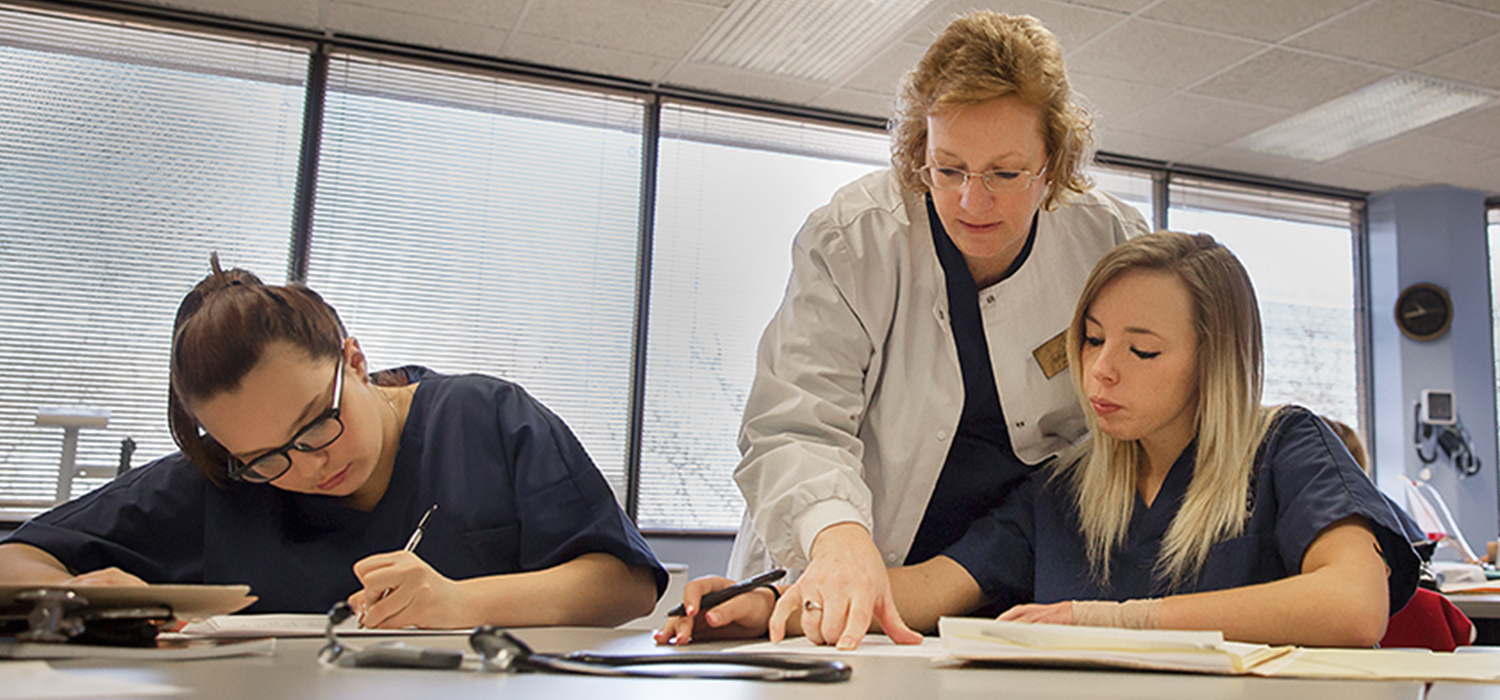Contributor: Janet Rapuano, Ph.D.
How High School Students are Entering Healthcare Careers Earlier and More Prepared
CTE in the community
Across the United States, communities watch with pride as high school graduates walk across the stage and then into career opportunities. Many of these career and technical education (CTE) graduates earned not only their high school diplomas, but also received hands-on experience and education toward a specific career path. Often, students who choose a health sciences track within their CTE program can graduate with one or more allied health credential, providing them with a direct path to employment. These students and their communities are reaping the benefits of their achievements.
Filling in-demand jobs in healthcare
The aging population in the U.S. is increasing the demand for healthcare workers; by 2040, projections show one in five Americans will be over the age of 65.1 The impact of this is twofold: one, a large number of healthcare professionals will be retiring, creating many open jobs, and two, the aging population will need more healthcare services, which will require many more healthcare professionals.
“The world is constantly changing, but careers in the health fields and many others are ever-present.”
“The world is constantly changing, but careers in the health fields and many others are ever-present,” explains Janet Rapuano, Ph.D., career consultant at Adams County Tech Prep, which serves students from five high schools in Adams County, Pennsylvania. “We need to train the students to fill the skills gaps coming up in their future as many people retire.”
Certified allied health professionals are among the most in-demand, according to research from ExcelinEd and Burning Glass Technologies. Medical assistants, pharmacy technicians, and EKG technicians are all 100% undersupplied.2
Providing students with the knowledge and skillsets to take on jobs in healthcare continues to be a priority for educators. High school CTE program leaders see value in providing students with pathways to certification. In addition to entering the workforce immediately after graduation, students can use certification to become more competitive candidates for colleges and universities. Earning a certification also gives college entrants an opportunity to work in high-demand jobs while earning their degrees, and many times, employers will provide tuition assistance.
Since 2013, NHA has certified more than 68,000 learners in CTE programs. High school students perform well, with a pass rate around 72% across all the professional certification exams. Clinical health certifications through high school CTE programs continue to be on the rise.
Providing quality care to communities
Many do not realize that high school students can begin a career in healthcare, providing high-quality care to patients immediately after graduating. When high schools give students the opportunity to earn certifications, they help students prove that they can perform duties required for various allied health jobs. Certification indicates that a learner has met a nationally-recognized measure of competency.
Even in states where regulations do not require certification, many employers emphasize its importance. In a recent survey, 69% of employers reported that professional certification improves the standard of care, and 62% of employers said that professional certification improves patient safety.3
When students enroll in CTE programs with the intention of working in a healthcare career, they learn that they can truly make an impact. As they progress through their programs, their confidence grows because they have gained the skills and abilities to help patients. Knowing this motivates students and helps them stay focused through difficult coursework and in preparing for certification exams.
“Students understand the impact they can make on patients,” says Rapuano. “They take it seriously.”
The growth rate for allied health occupations outpaces the average rate for all occupations in the United States by more than two times.3
As CTE health science programs continue to grow
and certify more students, patients and healthcare institutions will continue to benefit from work-ready, newly certified allied health professionals. In communities where the demand for qualified clinicians is especially high, CTE programs offer a solution, bringing credentialed professionals to their local workforce earlier and more frequently.
References:
1 Gabriel, B. (2018). By 2040, One in Five Americans Will Be Over Age 65. AARP. Retrieved online on April 3, 2019 at https://www.aarp.org/politics-society/history/info-2018/older-population-increase-new-report.html.
2 Suffren, Q., & O’Kane L. (2019). The ROI of Industry-Recognized Credentials. Presentation, SXSWedu March 2019.
3 National Healthcareer Association. (2019). The 2019 Industry Outlook of Allied Health Professions.




